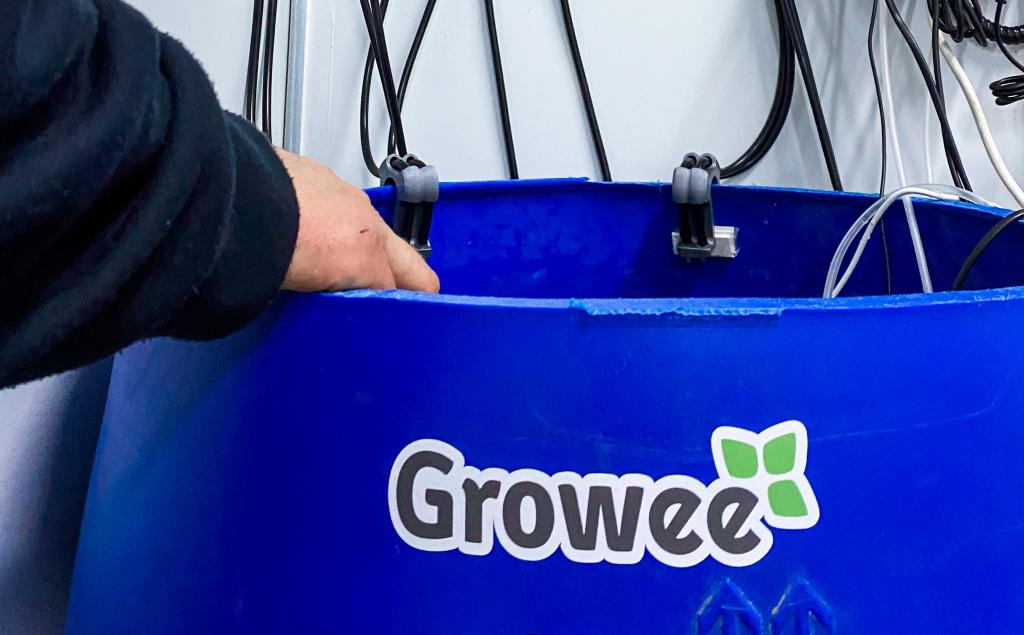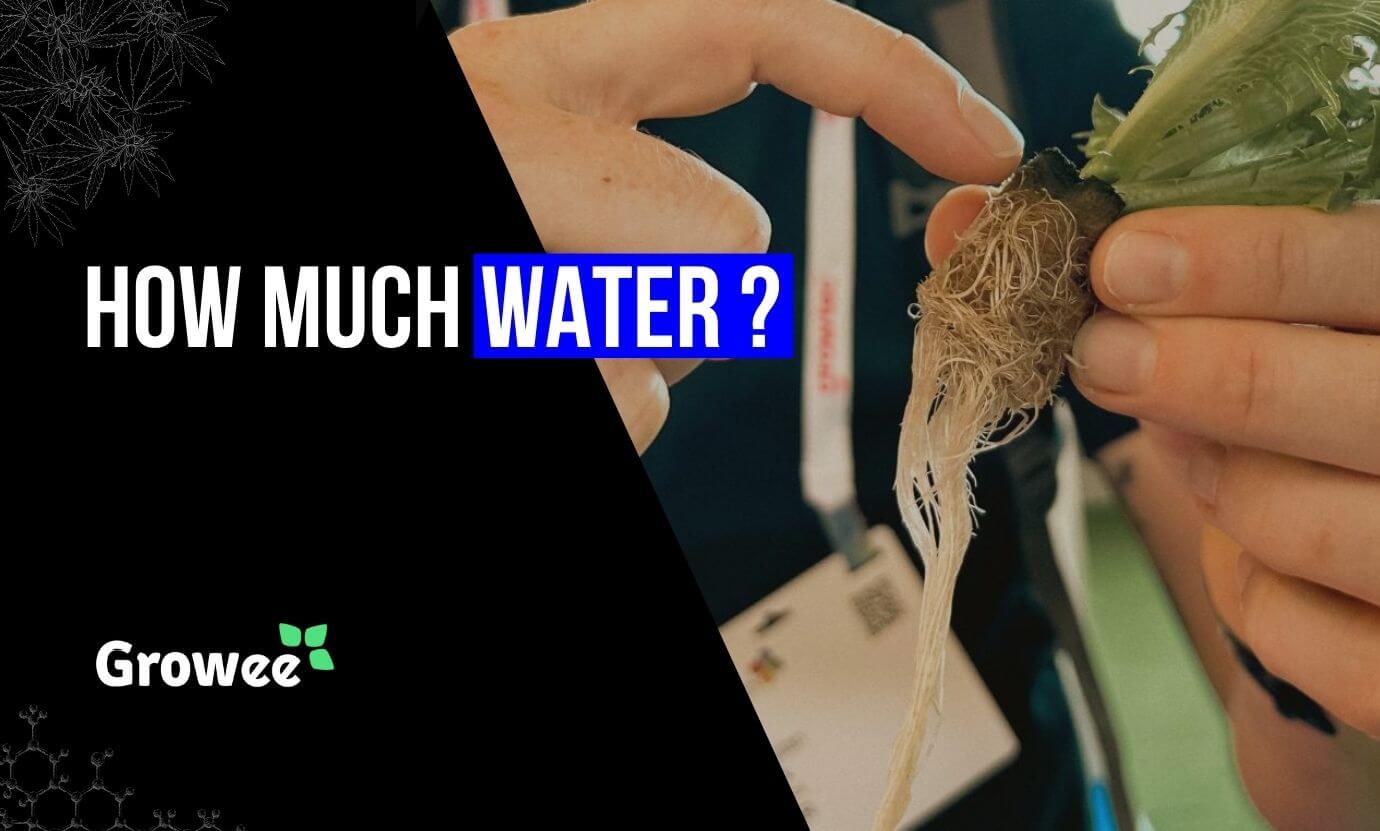When considering hydroponic plant cultivation, one of your concerns may revolve around sustainable water usage. Water, known for its potential environmental impact and cost, becomes a critical factor in hydroponics.
That said, there are some hydroponics systems that are more water-efficient than others. The main question we’re here to answer today is how much water hydroponic systems use. We’ll also cover some other very important details about hydroponics systems that you need to know, all in relation to their water usage.
What is Hydroponics?
For those of you who don’t know, hydroponics is a special technique used in agriculture and horticulture, where plants of all sorts are grown without the use of soil. Here, instead of plants being grown in soil, they are grown in what essentially amounts to a water bath.
To be specific, the plants are suspended in so-called net pots, with an inert medium such as clay pebbles providing stability, and the roots hanging down into some sort of water reservoir or watering system.
This reservoir or watering system contains the nutrient solution which the plants need to survive. Exactly what the hydroponics setup looks like depends on the specific type that you build, which is what we are about to look at below.
What Are the Most Common Types of Hydroponic Systems?
There are several common types of hydroponics systems to be aware of, each of which may be slightly better or worse in terms of water efficiency. Let’s take a look.
Deep Water Culture
Deep water culture or DWC is a simple hydroponics system where plant roots are suspended in a nutrient solution that is oxygenated. The roots hang down into the nutrient solution, feeding the plants. This version is moderately water efficient, with the big benefit being that it’s very lost cost and doesn’t need much maintenance.
Recirculating Deep Water Culture
RDWC is very similar to the hydroponic system discussed above, with one key difference, which is that the nutrient solution is constantly recirculated throughout the system. Thanks to this, it’s slightly more water-efficient than a regular DWC system.
Nutrient Film Technique
The nutrient film technique, or NFT, has a shallow channel or tray through which a nutrient solution runs through. The roots of the plants hang down into this solution as it flows through the channel. It does require a pump and timer, but it’s the most water efficient hydroponics setup on the list so far.
Ebb and Flow
Ebb and flow is a hydroponics technique that sees small water reservoirs constantly filled and drained with a nutrient solution. This is great for large plants, plus it’s quite water efficient too, although you do need a good deal of equipment for it.
Drip Irrigation
The drip irrigation hydroponics technique has tubing which carries a nutrient-rich solution to all of the plants, which drops down over the inert medium and onto the roots. This is a very water efficient system, although it can be quite complicated to set up and maintain.
The Wick System
The wick system has a wick, usually made of cotton, that hangs down into the water reservoir. This wick draws the nutrient solution up into the inert medium which the plants sit in, thus providing the roots with essential hydration and nutrients. This is a very water efficient system.
See How Growee Can Save You Time By Automating Your Plants Feeding
Water pH – Automated pH Up and Down Control
Nutrients Mixing – Automated Nutrient Dosing with Target EC / PPM Control.
Control From Anywhere – WiFi Connection and mobile App
Difference Between Hydroponics, Aeroponics, and Aquaponics
Something you may have heard of is aeroponics. Now, aeroponics and hydroponics are not the same thing. In hydroponics, plant roots are submersed or submerged in water for a good deal of time.
However, in aeroponics, the plant roots hang down into a chamber that is filled with air, not water. In this chamber, there are many water pumps and misters that periodically mist the plant roots with a nutrient solution. It’s a good way to prevent overwatering and root rot, although a lot of maintenance and diligence is required, because it’s easy to mist the plant roots too little or too much.
We then have aquaponics, which is a whole different thing in itself. Aquaponics combines hydroponics, which means growing plants in water, with aquaculture, which means raising fish or other aquatic animals. Yes, here you have plant roots hanging down into a water chamber that is home to fish and other creatures. Aquaponics can actually have many different benefits, and if you have both plants and fish anyway, then water-efficiency is certainly one of those benefits.

What is the Water Requirement of Hydroponics?
Saying how much water a hydroponics system uses is almost impossible to say, because it depends on the size of the system, the type and size of plants, and the surrounding environment. Generally speaking, small plants will need about 0.5 gallons of water per plant, medium plants need 1.5 gallons of water per plant, and large plants need 2.5 gallons of water per plant.
In some hydroponic growing methods, it is known that water consumption can be higher. For example, the water consumption of cannabis plants in the later flower stages can reach up to 1-3 gallons a day.
With that being said, both deep water culture and nutrient film techniques tend to be very water efficient, with the wick system also being quite efficient.
Although, aeroponics seems to be the most efficient of all. However, what we can also say is that hydroponics generally use up to 90% less water than traditional soil-based growing techniques.
One notable risk in aeroponics is the potential vulnerability of the system to power outages or pump failures. In the absence of power or pump malfunctions, the mist that provides essential nutrients to the plants’ roots can cease, leading to the roots drying out and the plants ultimately perishing
Just keep in mind that different plants will require the water to have varying temperatures, EC levels, pH levels, and oxygen levels, so make sure to do your research for specific plants.
Maintaining these parameters within the precise ranges suitable for specific plants is of utmost importance. Any significant deviation from these optimal conditions can impact plant health and growth adversely
The Impact of pH-Balanced Water on The Plants Water Consumption in Hydroponics?
In hydroponics, the efficient use of water is a crucial consideration, and understanding the interplay between water, pH balance, and nutrient absorption is key. pH-balanced water enhances nutrient uptake by plants, promoting healthier growth, but also potentially increasing nutrient and water consumption.
Achieving the right equilibrium between nutrient-rich water, optimal pH levels, and water utilization is vital for hydroponic growers, as it not only fosters robust yields but also ensures efficient water management in these innovative cultivation systems.
For further insights into water consumption differences, especially in Deep Water Culture (DWC) systems, you can refer to our article on DWC water changes at where you’ll find information on how balanced water usage can affect plant health and growth.
Maintaining pH Balance with Growee pH Automation
Achieving the ideal pH balance in your water reservoir is a game-changer. As previously explored, balanced pH plays a pivotal role in nutrient uptake and overall plant vitality. Yet, let’s be honest – maintaining that precise pH level isn’t always a walk in the park.
Enter Growee pH Automation, your reliable partner in the journey. Our user-friendly pH automation system takes the complexity out of pH regulation, ensuring that your hydroponic system consistently delivers perfectly balanced water.
The result? Healthier, more vibrant plants, enhanced yields, and astute water management – all seamlessly managed by Growee pH Automation. Think of it as having a seasoned hydroponic expert on your side, effortlessly steering your system towards success
Best Type of Water to Use for Hydroponics
If you plan on growing plants hydroponically, then one of the best types of water to use is distilled water. It’s clean, free of bacteria and contaminants, and is easy for controlling nutrient levels.
You can also use reverse osmosis water, which is very pure and almost 100% free of all contaminants. Just like with distilled water, it’s also ideal for controlling nutrient levels, but producing RO water can in itself be costly and wasteful.
In all reality, most people will use tap water for their hydroponics systems, something which we will touch on further below. What you, however, also need to consider is the difference between hard water and soft water. Hard water is full of minerals, whereas soft water is not.
Chances are your tap water is hard, but you won’t know unless you test it. The point is that hard water is fine for plants that can handle more minerals, whereas soft water is best for plants that require fewer minerals.
How to Take Care of the Water Levels
The best way to take care of water levels in any hydroponic system is by using something like the Growee Pro Combo, which automatically controls water levels, pH levels, and nutrient levels. This is an ingenious tool that works for all types of hydroponic systems, and is excellent for fast and simple maintenance of water parameters.
Can You Use Tap Water for Hydroponics?
When considering tap water for your hydroponic system, it’s crucial to assess its initial electrical conductivity (EC) values beforehand. Tap water can generally be categorized into three groups: soft water, hard water, and reverse osmosis (RO) water.
Soft water is often an excellent choice if your tap water has well-balanced qualities, containing essential micronutrients that are beneficial for your plants, which may not be present in RO water.
On the other hand, hard water can be problematic, especially if it contains elevated levels of certain elements like nitrates, chlorides, and calcium. These high concentrations of specific elements can potentially pose risks to your hydroponic setup.
In summary, tap water can be used for hydroponics, but it’s essential to be aware of its characteristics, particularly the EC values, and choose the type that best suits your specific hydroponic needs. Soft water is often a preferred option if your tap water quality is suitable, while hard water may need careful consideration due to potential element concentrations
Conclusion
When all has been said and done, the bottom line is that a good hydroponics system can actually end up saving you a whole lot of water and money, up to 90% when compared to traditional farming and plant-growing methods. The only thing left for you to do now is to choose the right hydroponics system for you.
FAQ
How much water does hydroponics need?
Depending on the size of the plant, a hydroponics system needs anywhere between 0.5 and 2.5 gallons of water per plant.
Does hydroponics use less water?
In the grand scheme of things, yes, hydroponics uses much less water than other traditional farming and plant-growing methods, such as in soil.
What is the role of water in hydroponics?
The role of water in hydroponics is to keep the plants hydrated while also delivering the essential nutrients needed for growth.
How do I prevent water wastage in a hydroponic setup?
To prevent water waste in a hydroponic setup, make sure to choose a system that is very efficient in water use, such as NFT for instance.
What is the impact of temperature on water consumption in hydroponics?
The higher the water temperature is in hydroponics, the faster that water will evaporate.
Do different crops have significantly different water requirements in hydroponics?
Yes, there can be significant differences in water use depending on the plant. For instance, cannabis is one of the highest water-consuming plants out there.



